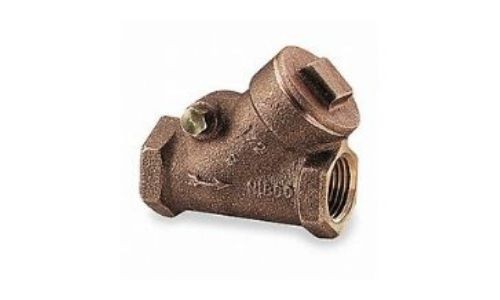
Understanding Sprinkler Stop-And-Waste Valves
Most home systems are wonderfully complex. Take an irrigation sprinkler system for example. There are tons of inner-workings of this underground system to keep it running flawlessly. And yet, from the outside, it seems so simple. The sprinklers turn on automatically, they water the grass, and they turn off.
The individual components of a sprinkler system, like a stop-and-waste valve, are working hard to keep sprinkler system management easy. In this article, homeowners can learn about their sprinkler system on a deeper level. They’ll learn to recognize stop-and-waste valves, know where they are located, and understand what to do if the valve malfunctions.
What Are Sprinkler Stop-And-Waste Valves?
 All plumbing systems have a shut-off valve. This type of complete shut-off serves two main purposes:
All plumbing systems have a shut-off valve. This type of complete shut-off serves two main purposes:- Shutting off the water to prevent an existing emergency from getting worse.
- Shutting off the water to prevent an emergency from happening in the first place.
This applies to both the plumbing system within the house and the plumbing system outside of the house: the sprinkler system. Homeowners can turn off the water in the sprinkler system without shutting off the water in the rest of the house using the stop-and-waste valve. This allows the system to drain and prevent frozen pipes.
The materials and components used in the stop-and-waste valve depend on the type of valve used. A stop valve uses a rubber gasket to turn off the flow of water, while a gate valve uses a brass wedge to control the flow of water, and a ball valve uses a steel ball to turn the water flow on and off.
Where to Find Stop-And-Waste Valves
When installing a sprinkler system, a plumber will dig deep underground and connect the sprinkler system to the main water supply for the house. At the house’s foundation, there is a “compression tee” in the plumbing system. This compression tee joins the piping of the house with the piping of the sprinkler system.

Since the purpose of a stop-and-waste valve is to shut off the water to the sprinkler system without shutting off the water to the house, it sits at this intersection on the compression tee. It’s important for homeowners to remember the location of the stop-and-waste valve so they know exactly where to place their sprinkler key in order to access the valve and turn it on and off at the change of seasons.
Sprinkler System Stop-And-Waste Valve Cost
 A broken or malfunctioning stop-and-waste valve is especially harmful to the home’s plumbing system if it stops working during seasonal transitions. These situations can even lead to burst pipes.
A broken or malfunctioning stop-and-waste valve is especially harmful to the home’s plumbing system if it stops working during seasonal transitions. These situations can even lead to burst pipes.Burst pipes, indoors and outdoors, are a disaster for homeowners, and burst pipes in the sprinkler system can lead to other problems like root clogs if the pipe is not fixed immediately.
Plumbing emergencies leave no time to waste and they can be quite expensive to fix, especially if other damage occurs as a result. To avoid the hassle and high cost of a burst pipe in the sprinkler system, homeowners should regularly check and test their stop-and-waste valve to ensure it’s working properly.
About Honest Abe’s Home Services
Honest Abe’s Home Services is a one-stop source for plumbing, heating, air conditioning, and mold remediation needs, including emergency services. With state of the art technology and regular employee training, they provide customers with red carpet service and top-quality workmanship.
Distribution Links +
- www.erienewsnow.com
- www.kake.com
- www.wrcbtv.com
- www.magic1065.com
- www.lubbocks969thebull.com
- www.fox21delmarva.com
- www.wicz.com
- www.wboc.com
- www.telemundolubbock.com
- www.tulsacw.com
- www.weny.com
- www.1007thescore.com
- www.doublet973.com
- www.937theeagle.com
- www.fox34.com
- www.lubbockcw.com
- www.mylubbocktv.com
- www.oldies977lubbock.com
- www.1077yesfm.com
- www.rfdtv.com
- www.ktvn.com
- www.wfmj.com
- www.htv10.tv
- www.snntv.com
- central.newschannelnebraska.com
- metro.newschannelnebraska.com
- southeast.newschannelnebraska.com
- midplains.newschannelnebraska.com
- northeast.newschannelnebraska.com
- plattevalley.newschannelnebraska.com
- panhandle.newschannelnebraska.com
- rivercountry.newschannelnebraska.com
- www.wrde.com
- www.telemundonuevomexico.com
- www.wfxg.com





